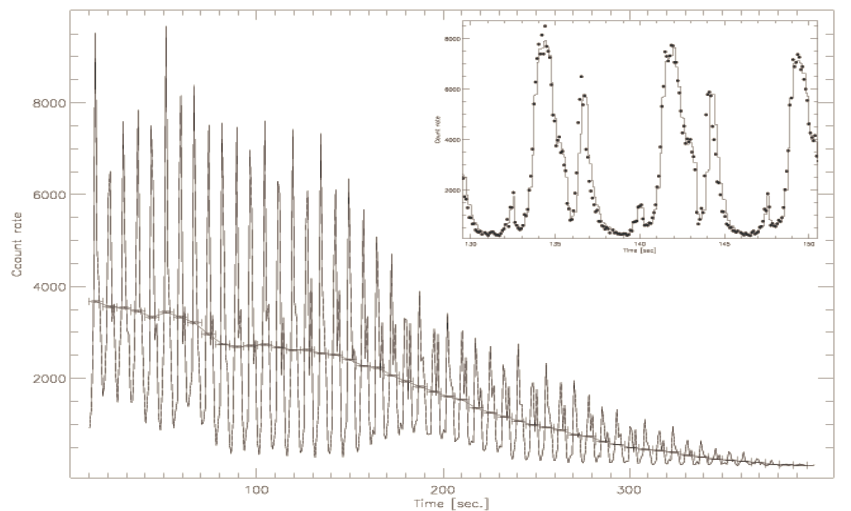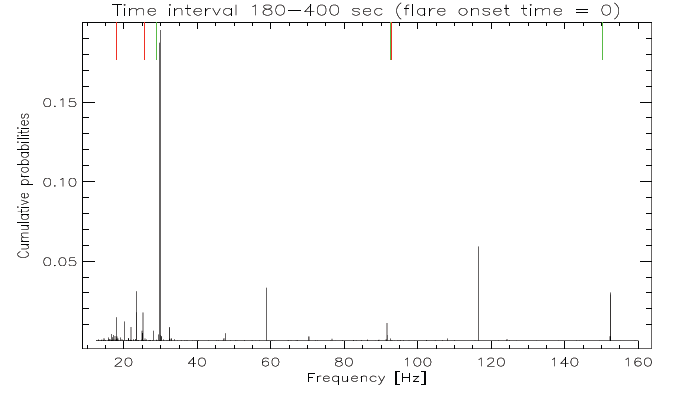Project B9
"Gravitational Waves from Magnetar Seismology"
Magnetars are neutron stars with immense magnetic fields: B > 1014 Gauss. To date, three giant flares from magnetars have been observed, each yielding peak luminosities of an astonishing few times 1047 erg s-1. Timing analysis of the tails of these flares reveal quasiperiodic oscillations (QPOs), whose frequencies are consistent with Alfvén waves associated with the extremely strong magnetic fields in both the interior and crust of the star. It is an open question whether the GW output from such events provides viable sources for current and / or future generation GW detectors.
In broad terms, the goals of this project are to
- Evolve 3 + 1 GRMHD simulations to study the non-linear dynamics of intense magnetic fields in strong gravity, and hence determine the overall luminosity of GWs emitted immediately after magnetar giant flare eruptions.
- Model linear evolutions both with and without a crust to determine the crust-core couplings of various modes, as well as looking at the impact of various magnetic field configurations on subsequent evolutions.
- Study the role of superfluidity / superconductivity in the magnetic properties of NSs.
- Utilise more sensitive and sophisticated Bayesian modeling approach for the observational detection of as yet undiscovered QPOs in both magnetar flare data and Soft Gamma-ray Repeaters (SGRs).
Our work includes the Bayesian Search for QPOs
The most widely used procedure for the detection of QPOs is an analysis of the power spectrum calculated from the discrete Fourier transform of uniformly sampled data, which requires the subjective procedure of binning the data to produce equally spaced samples. Another approach exists, known as the Gregory-Loredo Bayesian method, which does not require binning and takes into account rotational modulation and the decaying tail of the flare.
Light curve of RXTE for superflare from SGR 1806-20 observed on 27th of December 2004, Hambaryan, Neuhäuser & Kokkotas 2010, A&A 528, 45.
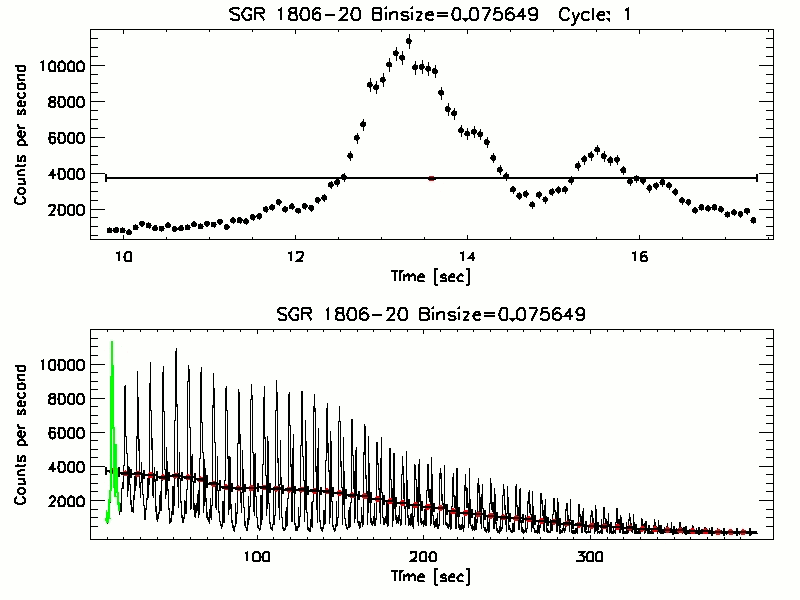
Giant flare decay for each rotational cycle of SGR 1806-20.
Using the Gregory-Loredo Bayesion method, we have detected QPOs from the tail of the superflare from the Soft Gamma-ray Repeater (SGR) 1806-20 Hambaryan, Neuhäuser & Kokkotas 2010, A&A 528, 45. We have confirmed the detection of QPOs at the frequencies reported originally by Watts & Strohmayer (2006) and detected additional QPOs at 16.9, 21.4 and 36.8 Hz. The new QPO frequencies agree with those predicted in Colaiuda, Beyer & Kokkotas 2009.
This method is currently being used to search other giant magnetar flares, as well as the quiescent state of SGRs.
Bayesian posterior probability vs trial frequency for superflare from SGR 1806-20 observed on 27th of December 2004, Hambaryan, Neuhäuser & Kokkotas 2010, A&A 528, 45.
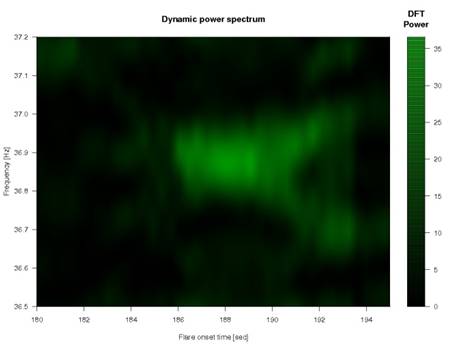
DFT dynamic power spectrum.
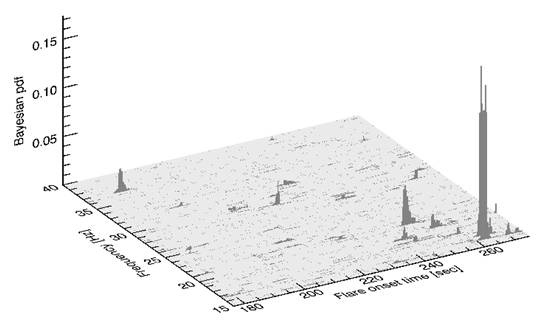
Bayesian analysis of frequency-time domain of the giant flare of SGR 1806-20.

